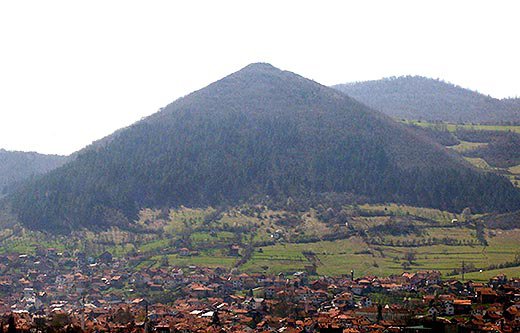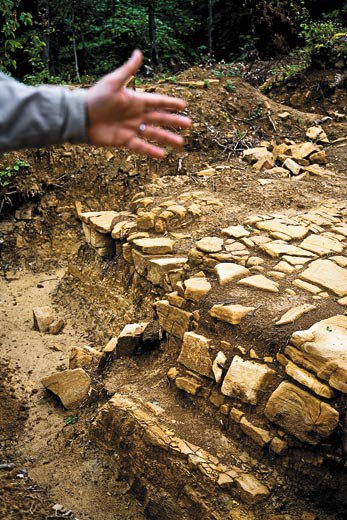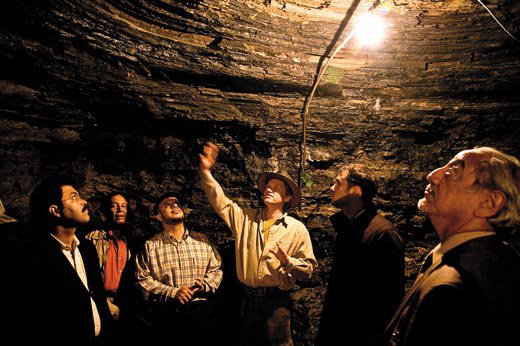The Bosnian Pyramids: One of the Greatest Finds ever
It’s either one of the greatest archaeological discoveries of our time, or man has made a giant pyramid out of a molehill.
In the wake of recent news that evidence of colossal pyramids had been found in the small Bosnian town of Visoko, many in the archaeological community are speaking out and dismissing both the discovery and the man who made it, businessman Semir Osmanagic.
Some critics have gone as far as to call the pyramid an absurd publicity stunt.
But Osmanagic stands by his claim.
“They are jealous,” Osmanagic told LiveScience in a telephone interview. “These people are going crazy because they’ve been teaching students that these [Bosnians] were cavemen and all of a sudden they are finding complex structures here.”
Something is there
Osmanagic first noticed the irregularly shaped hills on a trip to the town, located 18 miles north of Sarajevo. Preliminary digging uncovered mysterious slabs in a stone not native to the immediate area.
Further excavation of the hills in April of this year, along with the incredible announcement that one would be much larger than the great pyramid of Cheops at Giza, Egypt, prompted the most recent news release.
Satellite images, thermal analysis and radar studies have been performed at the site, all independently confirming the existence of pyramid-shaped architecture, according to Osmanagic. More importantly, he said, the tests suggest that the layout could not have been man-made.
Photos released by the media and made available on Osmanagic’s website show a series of stone plates buried just beneath the top layer of soil and vegetation. Despite the tests and pictures, some archaeologists aren’t convinced by his claims.
“Clearly there are voids or something similar in the rock, but that is a long way from saying these are man-made,” said Anthony Harding, president of the European Association of Archaeologists.
The pyramids could be upwards of 12,000 years old, Osmanagic has deduced, based on geological knowledge of the area. That is a main point of contention for specialists concerned with archaeology in the Balkan region.
“Europe was in the late Upper Paleolithic at this point and no one was building anything except flimsy huts,” Harding said.
Workers at Visoko are spending this dig season sending twelve probing wells into different spots on the hill. Radiocarbon dating on organic material taken from the site may be performed as early as this fall, Osmanagic said.
No formal training
Whatever the outcome of the tests, critics also charge that the media did not do enough research into the background of Osmanagic, who has no formal archaeological training.
“A self-described archaeologist, who believes the Maya and others are descended from Atlanteans … has been accepted as a legitimate researcher by many news outlets,” writes Archaeology magazine online editor Mark Rose, in reference to Osmanagic’s somewhat unorthodox interpretation of the Mayan culture found in his book, “The World of the Maya” (Gorgias Press, Euphrates imprint, 2005).
The Bosnians spent fifteen years studying pyramids throughout the world and much of that time was in Mexico and Central America.
Many of those conducting the fieldwork at Visoko are local volunteers, not professionals. Experts worry that the often arduous scientific process is being eschewed in favour of some quick publicity for the country of Bosnia-Herzegovina, which has been hungry for the good press after years of civil conflict dogged it in the 1990s.
“It adds insult to injury when rich outsiders can come in and spend large sums pursuing their absurd theories (the construction of a colossal pyramid so large that it dwarfs even those of Egypt or Mesoamerica? 12,000 years ago?), in ways that most other countries would never countenance,” Harding wrote in an April 25 letter to the editor of The London Times.
Work is slated to continue at Visoko, by which time Osmanagic believes the research will have vindicated his theories. Meanwhile, he isn’t worried that what he’s found does not mesh with current thinking.
“We laugh at the people who said that the world was flat, and they laughed at Galileo,” he said. “The history books will just have to be rewritten from scratch, that’s all.”









